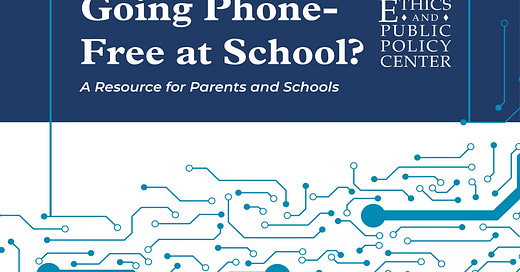Smartphones in schools are increasingly wreaking havoc on both the academic and social development of America’s children. They are distracting students from learning, inhibiting students from healthy socializing, and causing student discipline issues in class and on campus. Teachers are frustrated, students are suffering, and parents feel like they’re fighting an uphill battle against technology and peer pressure.
In light of the mounting evidence, many schools and school districts, even states, are considering going phone-free. Research has shown that school phone bans work. They improve academic outcomes and reduce discipline issues and mental health symptoms. Take for example, a 2024 study from Norway that found smartphone bans improved students’ GPA, test scores, and their likelihood of attending an academic high school track (in Norway high school programs are split between academic and vocational), especially for girls. Or another study from the London School of Economics that found following a ban on phone use, student test scores improved overall by 6.4 percent and for underachieving students (those in the bottom quartile of prior achievement), the effect was doubled: their average test scores rose by 14 percent.
Still parents have concerns about children not having access to phones during the day for communication needs or emergencies and administrators have various factors to weigh in deciding what kind of a policy change to make. To help schools and parents think through the considerations involved in going phone-free, I have created a PDF resource, available for download here.





